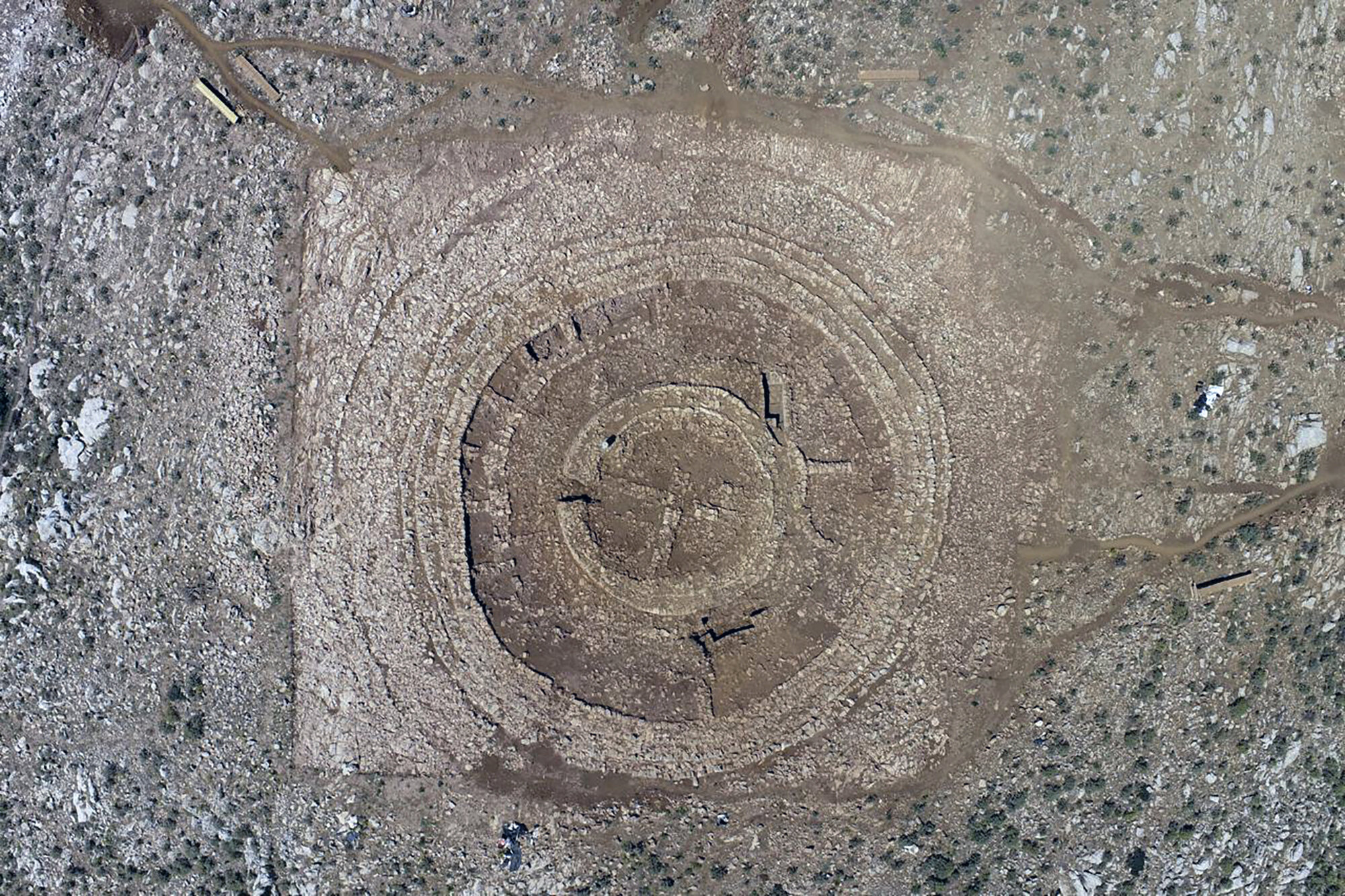(NLDO) - The unusual labyrinth is up to 4,000 years old, covers an area of 1,800 m2, and is located on a hill on the Greek island of Crete.
According to a research team led by the Greek Ministry of Culture, the labyrinth consists of eight concentric stone rings, with an average thickness of 1.4m. Some parts of the stone rings have collapsed over time, but one section remains intact, measuring up to 1.7m in height.
The structure belongs to the Minoan culture of Crete, a culture that left the world towering sanctuaries, many perched precariously on hilltops and mountaintops.

Mysterious labyrinth on top of a hill in Crete island - Greece - Photo: GREEK MINISTRY OF CULTURE
According to Science Alert, Minoan ruins demonstrate the sophistication of Minoan art, including religious architecture, terracotta statues of animals and humans, strange sacrificial objects...
But it is unclear what specific purpose the circular labyrinth structure - found at Papoura Hill on the island of Crete - was used for.
In a statement, the Greek Culture Ministry said archaeologists believe the labyrinth may have been used periodically for ritual ceremonies involving the consumption of food, wine and possibly offerings.
This argument comes from the large number of animal bones found inside the structure.
The main period of use of this structure was 2000-1700 BC, falling within the Middle Minoan period.
During this time, the island's population increased significantly, and many large structures were erected including Crete's iconic Minoan palaces.
The site may have continued to be used with lesser frequency afterwards, as there is the presence of pottery remains from the Neo-Palatial period, c. 1750–1470 BC.
The structure was discovered during excavation work to build Kastelli airport, a very "long-winded" project because it encountered 35 archaeological sites.
“This is a unique discovery that deserves great attention,” said archaeologist Lina Mendoni, Greek Minister of Culture. “There are many solutions for archaeological research on the site and it is fully protected.”
Source: https://nld.com.vn/xay-san-bay-lo-ra-me-cung-4000-nam-tuoi-196240618083415724.htm


![[Photo] Phuc Tho mulberry season – Sweet fruit from green agriculture](https://vstatic.vietnam.vn/vietnam/resource/IMAGE/2025/4/10/1710a51d63c84a5a92de1b9b4caaf3e5)



![[Photo] Unique folk games at Chuong Village Festival](https://vstatic.vietnam.vn/vietnam/resource/IMAGE/2025/4/10/cff805a06fdd443b9474c017f98075a4)
![[Photo] Prime Minister Pham Minh Chinh chairs meeting to discuss tax solutions for Vietnam's import and export goods](https://vstatic.vietnam.vn/vietnam/resource/IMAGE/2025/4/10/19b9ed81ca2940b79fb8a0b9ccef539a)






















































































Comment (0)